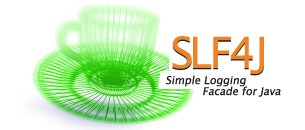
The Document Object Model (DOM) is a cross-platform and language-independent interface that treats an XML or HTML document as a tree structure wherein each node is an object representing a part of the document. The DOM represents a document with a logical tree. Each branch of the tree ends in a node, and each node contains objects. DOM methods allow programmatic access to the tree; with them one can change the structure, style or content of a document. Nodes can have event handlers attached to them. Once an event is triggered, the event handlers get executed.
Java Platform, Standard Edition is a computing platform for development and deployment of portable code for desktop and server environments. Java SE was formerly known as Java 2 Platform, Standard Edition (J2SE).
The bridge pattern is a design pattern used in software engineering that is meant to "decouple an abstraction from its implementation so that the two can vary independently", introduced by the Gang of Four. The bridge uses encapsulation, aggregation, and can use inheritance to separate responsibilities into different classes.

The syntax of Java is the set of rules defining how a Java program is written and interpreted.
Hibernate ORM is an object–relational mapping tool for the Java programming language. It provides a framework for mapping an object-oriented domain model to a relational database. Hibernate handles object–relational impedance mismatch problems by replacing direct, persistent database accesses with high-level object handling functions.
Apache Wicket, commonly referred to as Wicket, is a component-based web application framework for the Java programming language conceptually similar to JavaServer Faces and Tapestry. It was originally written by Jonathan Locke in April 2004. Version 1.0 was released in June 2005. It graduated into an Apache top-level project in June 2007.
XML Interface for Network Services (XINS) is an open-source technology for definition and implementation of internet applications, which enforces a specification-oriented approach.

Apache Log4j is a Java-based logging utility originally written by Ceki Gülcü. It is part of the Apache Logging Services, a project of the Apache Software Foundation. Log4j is one of several Java logging frameworks.
The Spring Framework is an application framework and inversion of control container for the Java platform. The framework's core features can be used by any Java application, but there are extensions for building web applications on top of the Java EE platform. Although the framework does not impose any specific programming model, it has become popular in the Java community as an addition to the Enterprise JavaBeans (EJB) model. The Spring Framework is open source.
The Java Class Library (JCL) is a set of dynamically loadable libraries that Java Virtual Machine (JVM) languages can call at run time. Because the Java Platform is not dependent on a specific operating system, applications cannot rely on any of the platform-native libraries. Instead, the Java Platform provides a comprehensive set of standard class libraries, containing the functions common to modern operating systems.
Within computing, Jakarta Activation is a Jakarta EE API that enables developers to:
Domain-driven design (DDD) is a major software design approach, focusing on modeling software to match a domain according to input from that domain's experts.

Simple Logging Facade for Java (SLF4J) provides a Java logging API by means of a simple facade pattern. The underlying logging backend is determined at runtime by adding the desired binding to the classpath and may be the standard Sun Java logging package java.util.logging, Log4j, Reload4j, Logback or tinylog.
In object-oriented design, the chain-of-responsibility pattern is a behavioral design pattern consisting of a source of command objects and a series of processing objects. Each processing object contains logic that defines the types of command objects that it can handle; the rest are passed to the next processing object in the chain. A mechanism also exists for adding new processing objects to the end of this chain.

Spring Roo is an open-source software tool that uses convention-over-configuration principles to provide rapid application development of Java-based enterprise software. The resulting applications use common Java technologies such as Spring Framework, Java Persistence API, Thymeleaf, Apache Maven and AspectJ. Spring Roo is a member of the Spring portfolio of projects.
The Application Interface Specification (AIS) is a collection of open specifications that define the application programming interfaces (APIs) for high-availability application computer software. It is developed and published by the Service Availability Forum and made freely available. Besides reducing the complexity of high-availability applications and shortening development time, the specifications intended to ease the portability of applications between different middleware implementations and to admit third party developers to a field that was highly proprietary in the past.
Canigó is the name chosen for the Java EE framework of the Generalitat de Catalunya.
This article compares the application programming interfaces (APIs) and virtual machines (VMs) of the programming language Java and operating system Android.
Apache Commons Logging is a Java-based logging utility and a programming model for logging and for other toolkits. It provides APIs, log implementations, and wrapper implementations over some other tools.




